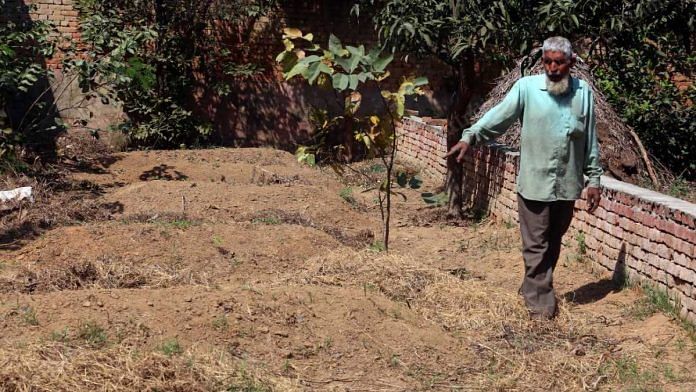Amroha: A horrific incident that took place 13 years ago, on a summer night in 2008, continues to dictate what a village in Uttar Pradesh’s Amroha district is known for, and what it talks about.
Much of these discussions in Bawankhedi village centre on a house located right by the main road.
Standing in one part of a sprawling 9-acre property, surrounded by gardens that have seen better days and a mango orchard, the house bears clear signs of age. The large gate that leads into the property is rusted, and paint is chipping off its walls.
However, the real story of the house is revealed by its abandoned first floor. With dried blood still spattered across the walls, its rooms are desolate, as if mourning the family that once lived here — the family that was murdered in its sleep here by one of its own on 14 April 2008.
The house was inhabited by Shaukat Ali and his family until his daughter Shabnam killed all of them — including her 11-month-old nephew — in conspiracy with her lover Saleem.
Both Shabnam, 37, and Saleem, 35, are currently on death row for the crime, with the Supreme Court upholding the punishment last year. If Shabnam is executed, she will be the first woman in Independent India to be hanged for a crime.
While Shabnam has been trying to get the death sentence commuted, the house remains at the centre of its own battle. Valued in crores, the property is one of the biggest estates in Bawankhedi and has allegedly emerged as a bone of contention for the extended Ali clan.
Shaukat’s brother Sattar, who owns half the property, now lives there with his family but claims to have received threats from distant relatives who have their sights set on it.
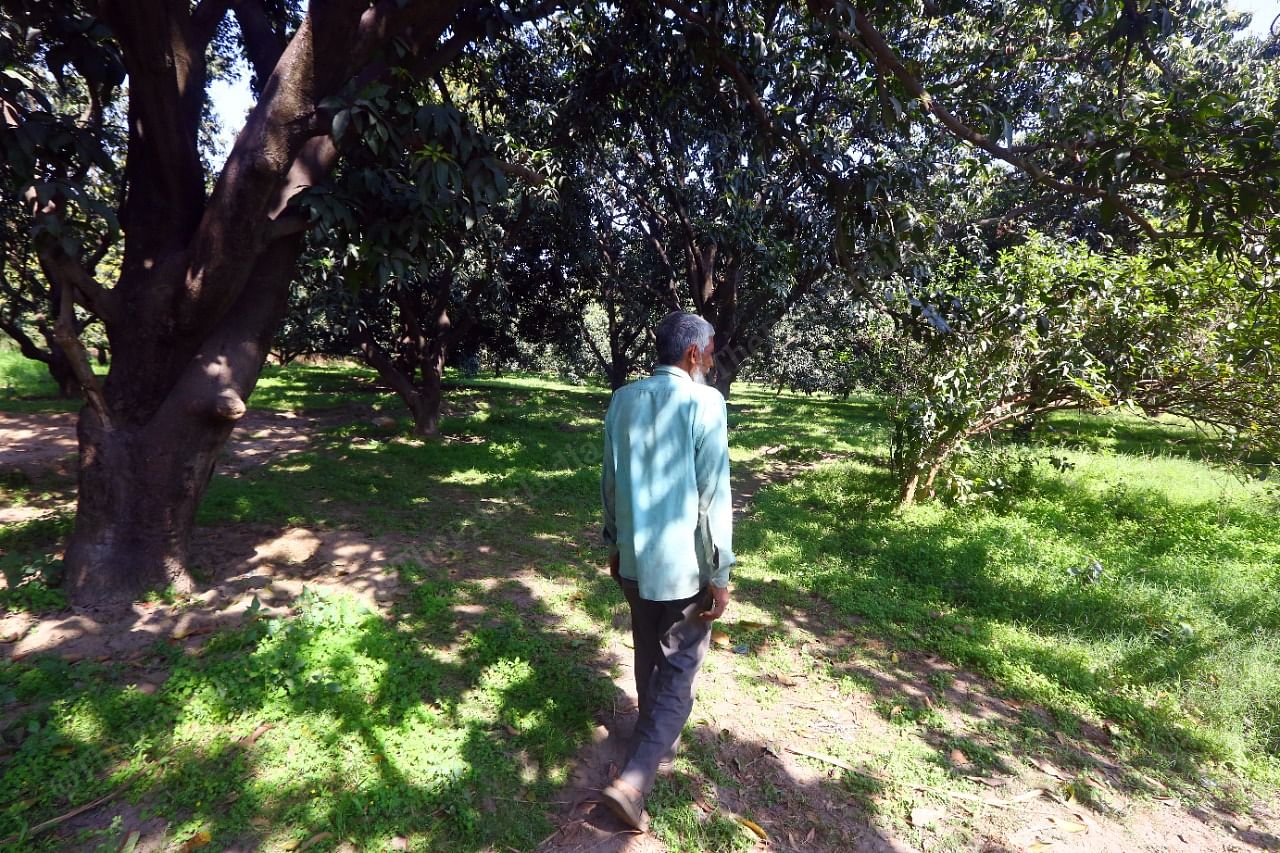
Then there is Shabnam’s son Taj Mohammad, whom she delivered months into her jail term in 2009. Born out of wedlock, her son is unlikely to have any claim to the property. But that hasn’t stopped villagers from imputing motives to his adoption by a college friend of Shabnam, Usman Saifi.
On his part, Saifi says the property ought to be given away in charity. “Nothing good can come out of it,” he said.
Also Read: Dalit girl in Aligarh was ‘strangled, smothered, dragged, but no sign of sexual assault’
‘Hoshiyaar’ Shabnam, ‘seedha’ Saleem
Villagers remember Shaukat Ali as a man who spent his life in the pursuit of education. “Master ji was a great man. He used to give free tuitions to children who needed them and never discriminated on any basis when it came to opportunities,” said Shahbaz Khan, a local resident.
Shabnam herself holds a double MA in English and Geography and taught at a primary school in the village. Her elder brother Anees was an engineer in Punjab and Rashid, the younger one, was a final-year BTech student.
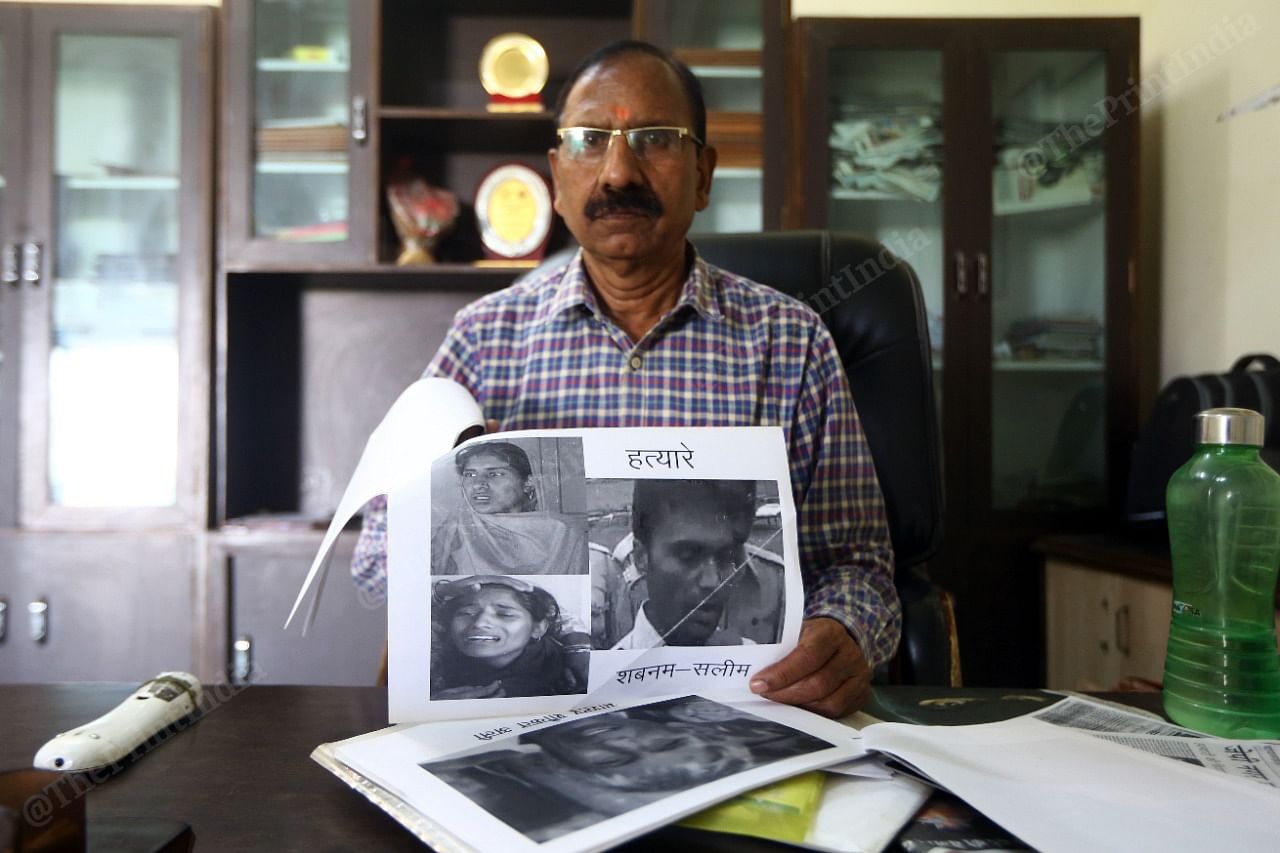
Khan, once taught by Shabnam, described her as a “hoshiyaar (smart)” woman. “She was my teacher in school and failed me in the fifth grade twice,” he chuckled.
Saleem, meanwhile, was known as a decent person among his neighbours. “Uss se seedha aadmi gaon mein nahi tha (no one else in the village was as decent as him),” a neighbour of Saleem, who didn’t want to be named, said.
However, he is a Class 6 dropout and was working at a wood sawing unit when he met Shabnam. According to R.P. Gupta, former Amroha Station House Officer (SHO) who was the investigating officer for the case, investigations had revealed that there had been tensions in the Ali family regarding Shabnam’s relationship with Saleem.
Shabnam was from a highly regarded Saifi Muslim family, while Saleem was a Pathan struggling to make ends meet.
The fact that they were in a relationship wasn’t widely known at the time of the crime. Even Saleem’s father Ahmed Rooh says he was unaware of it.
“I am his father. We didn’t know of any such relationship between Shabnam and Saleem. If I had known, I would have gotten them married.”
An ‘inside’ job
Around 2 am on 15 April 2008, Bawankhedi woke up to cries for help from the Ali house. “Bachao, bachao, koi mere parivaar ko maar kar chala gaya (Help, help, someone has killed my family and fled).” Local residents rushed to the site and found the doors of the Ali house locked from inside.
A wailing Shabnam opened the doors. She had been sleeping on the terrace, she said, and when she came down, she discovered her family had been axed at the neck by “dacoits”.
On the first floor, seven bodies were found — Shabnam’s father Shaukat Ali (55), her mother Hashmi (50), her elder brother Anees (35), his wife Anjum (25), their 11-month-old son Arsh, her younger brother Rashid (22), and cousin Rabia (14). Arsh had been choked to death.
R.P. Gupta, who is now retired, said he suspected from the get-go that it was an “inside job”.
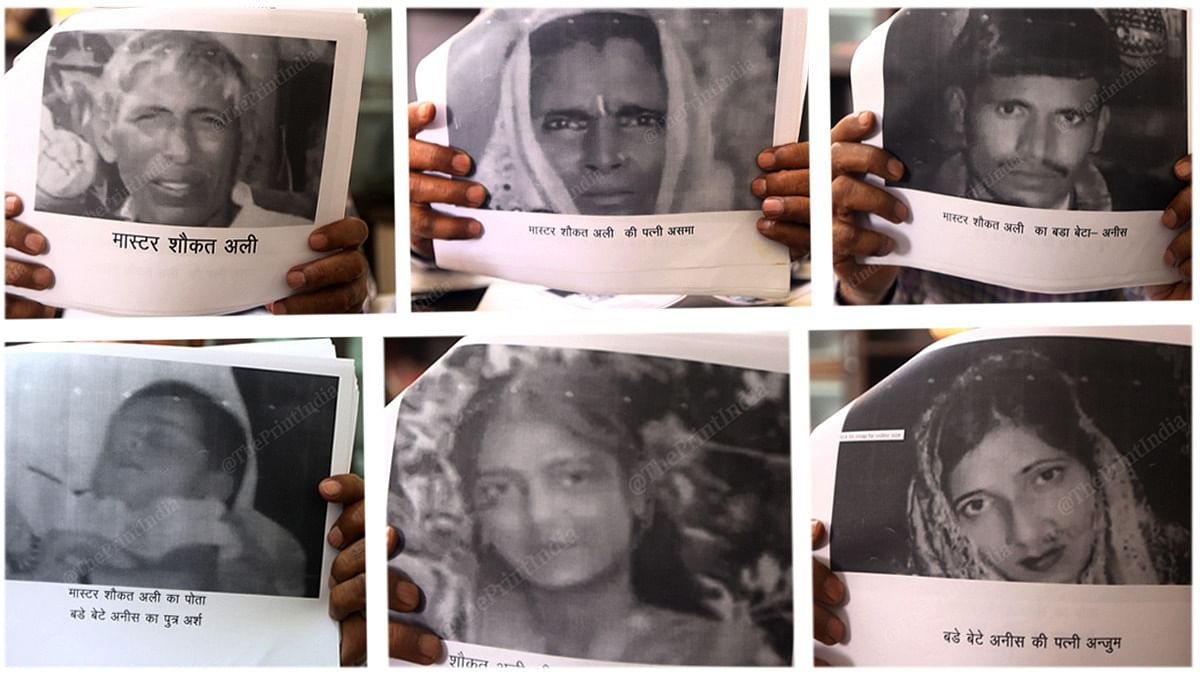
“I remember walking into the crime scene, the first thing I noticed was that none of the bedsheets was crumpled. There seemed to be no sign of struggle from the victims,” he added.
At that moment, Gupta said, he predicted that the family had been drugged. The autopsy report subsequently found traces of the tranquiliser biopose in all the victims except Arsh. Police, Gupta added, also found a wrapper of the medicine in the house.
The case was sealed when police recovered blood-stained clothes from Shabnam, he said. “We also found out that there had been 52 calls between Shabnam and Saleem on the night of the murders,” Gupta added. Saleem “himself recovered the axe he had thrown away after the murders and handed it over” to me, he said.
“I had a hunch from the beginning that this had been an inside job,” added Gupta. For one, the door was latched from the inside when the villagers first rushed to help Shabnam. “If it were someone on the outside, how had the doors been shut on the inside?” he said.
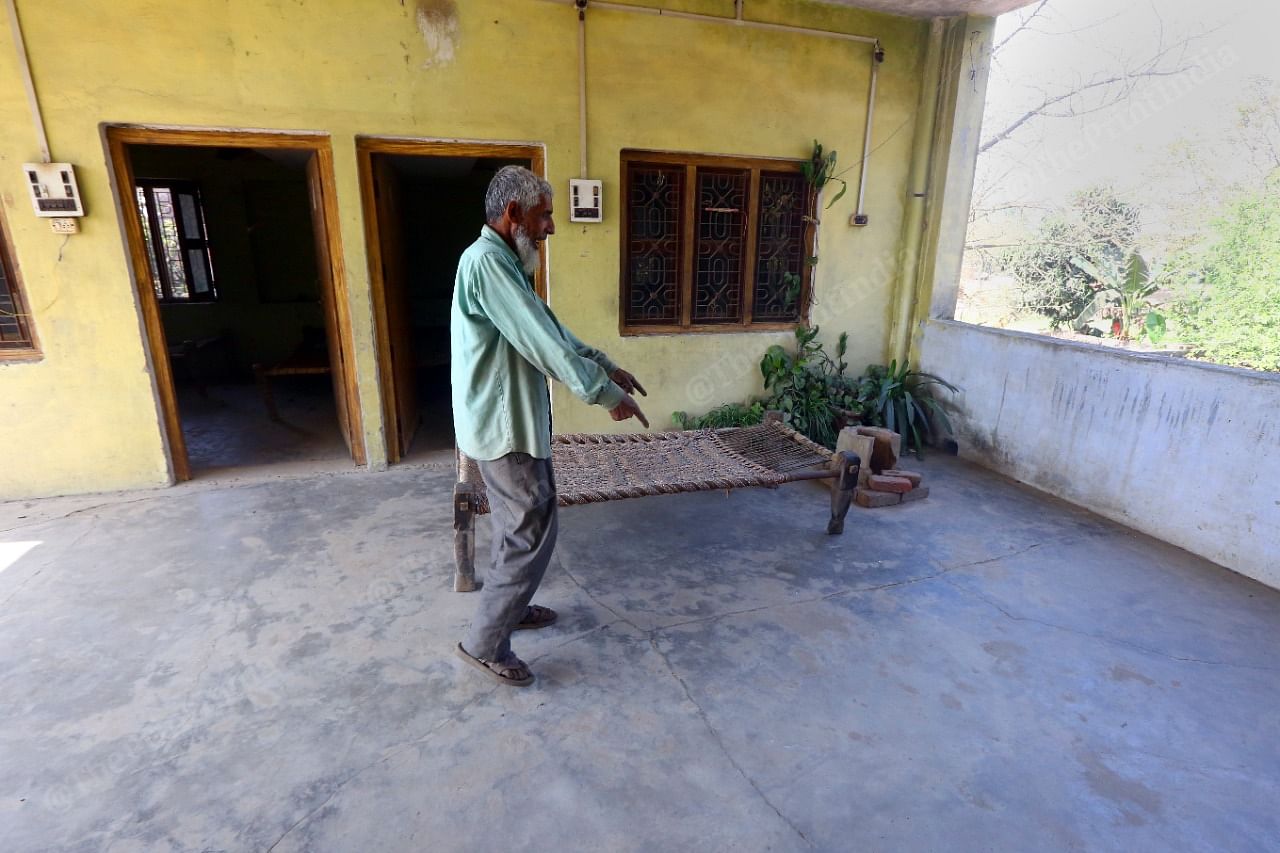
Five days after the murders, Shabnam and Saleem were arrested and sent to Moradabad jail. Gupta was hailed for his quick investigation and received a cash award of Rs 50,000, he said.
Ahmed Rooh, however, expressed his reservations about the investigation. “My son had been sleeping in our house on the night of the incident. Even today, he tells me he had nothing to do with this and I believe him. I had given him a good upbringing,” he said.
Ahmed believes his son has been wrongly convicted. Explaining the struggles his family has faced since the conviction, he tears up. “Abhi mein jee nahi raha, bas chal raha hoon (I am not living, just getting by),” he said. Before the crime, he had 15 people working for him. Now, he runs a pakoda stall to sustain his family.
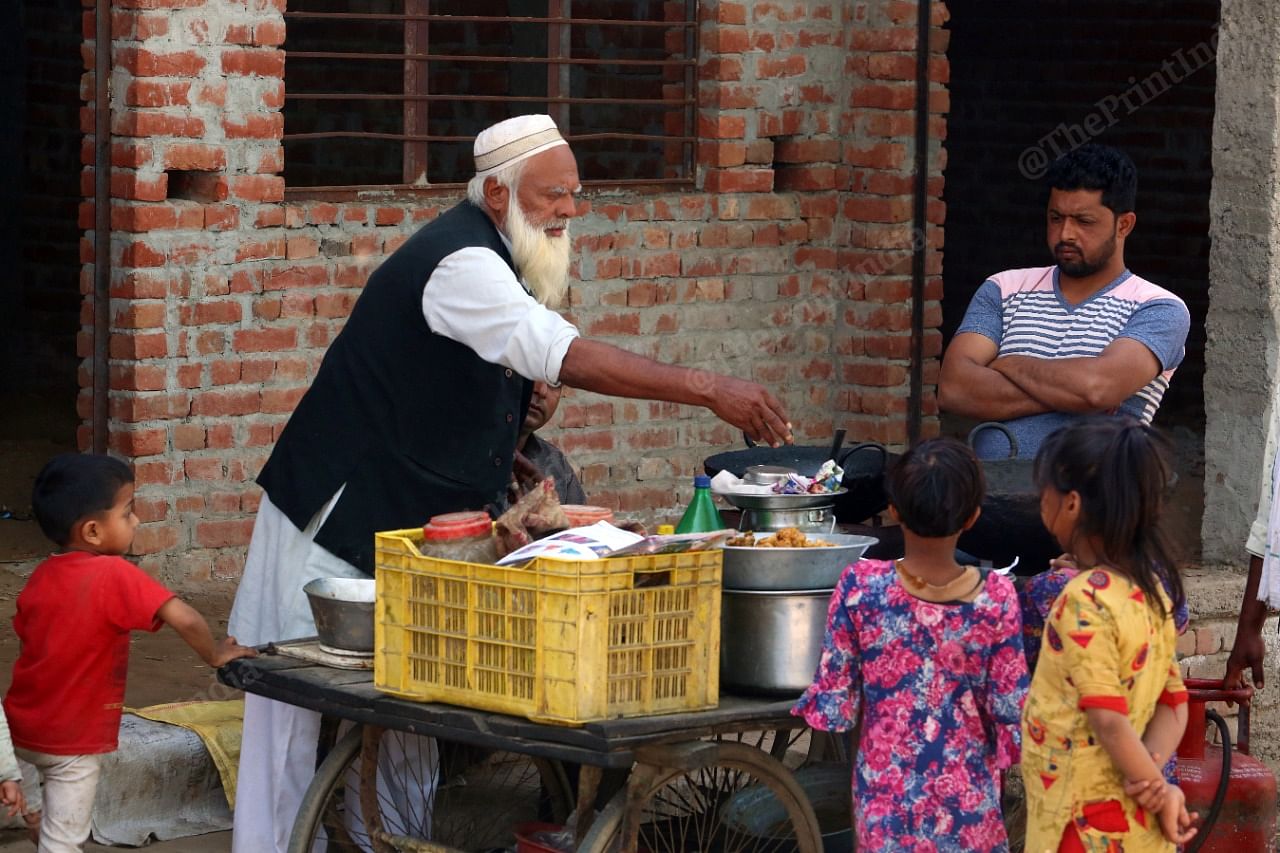
Shabnam’s aunt Fatima, who is married to Sattar, still struggles to make sense of the crime. “She was nice until she made friends with girls across the street,” she told ThePrint, when asked about Shabnam. “Uske baad woh bigad gayi (after that, she lost her way).”.
The fact that Shabnam strangled her nephew is something that is particularly hard for Fatima to comprehend. “She didn’t let anyone else touch him. She was very attached to him. This is all strange,” she said.
“I want to ask Shabnam,” Sattar Ali added. “You killed so many sons in the want of Saleem, wasn’t he someone’s son too?”
Over the last few weeks, several media reports have said that Shabnam and Saleem are likely to be hanged in UP’s Mathura jail, but the death warrant — laying down the date and time of the hanging — is yet to be issued by the Amroha sessions court.
In a statement to ThePrint, Shabnam’s lawyer Shreya Rastogi said her judicial remedies haven’t been exhausted yet.
“These include the right to challenge the rejection of her mercy petition before the Allahabad High Court and the Supreme Court on various grounds and also the right to file a curative petition in the Supreme Court against the decision on the review petition,” she added.
On 18 February 2021, Shabnam filed a second mercy petition with the UP Governor and the President, both of whom have earlier rejected her plea. The same day, Shabnam’s son Taj, now 12, filed an appeal with President Ram Nath Kovind seeking forgiveness for his mother.
Also Read: Hathras man ‘shoots father of woman he molested in 2018’, CM Yogi wants NSA against accused
The property battle
Sattar and Fatima moved into Shaukat Ali’s house with their family in 2008. According to Sattar, a few days after the murder, Gupta asked him to move there “before anyone else could take hold of the family property”.
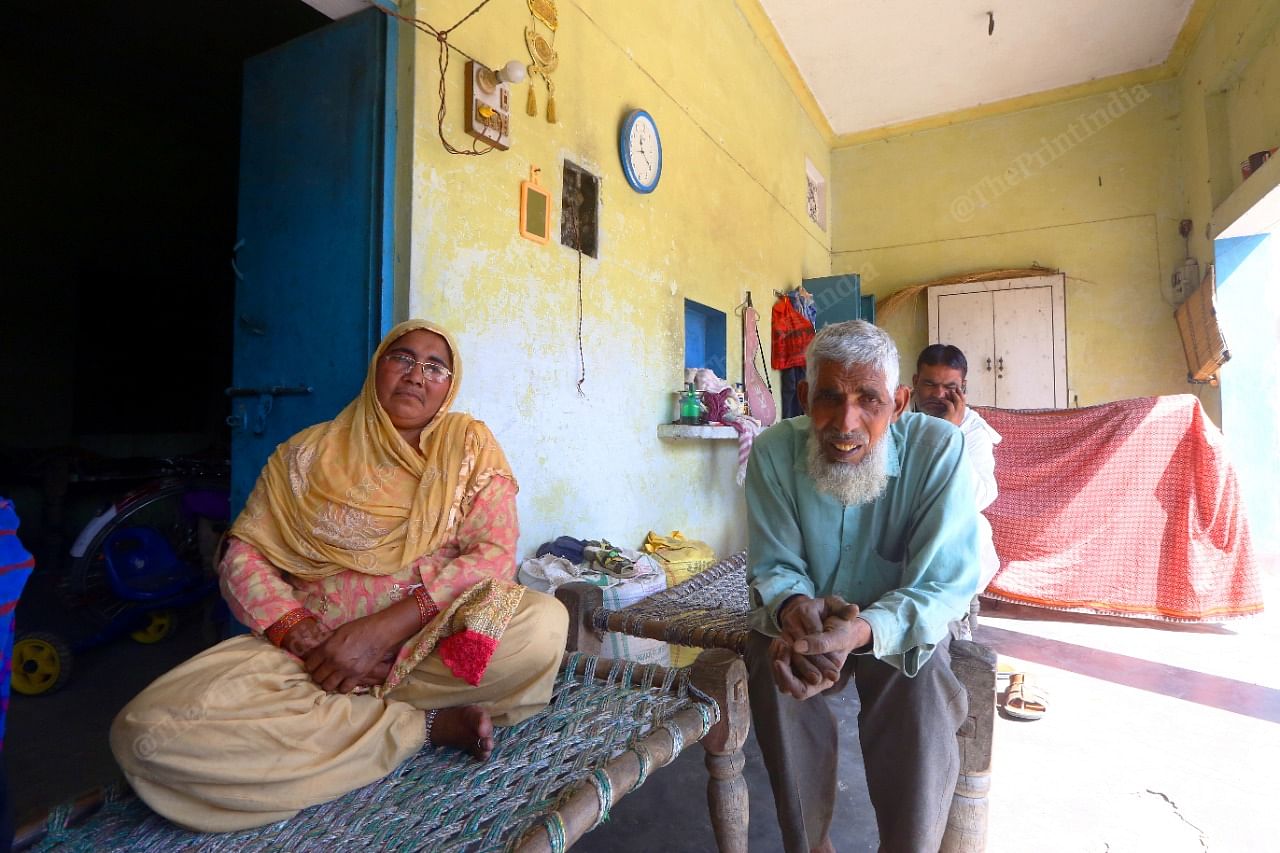
The family, which earlier lived in a modest accommodation in a nearby village, has made a home for themselves on the ground floor of the house. The first floor remains uninhabited.
Living in one of the biggest estates in the village, however, has come at a price for Sattar and Fatima, who say they live in constant fear of being thrown out by villagers or distant relatives.
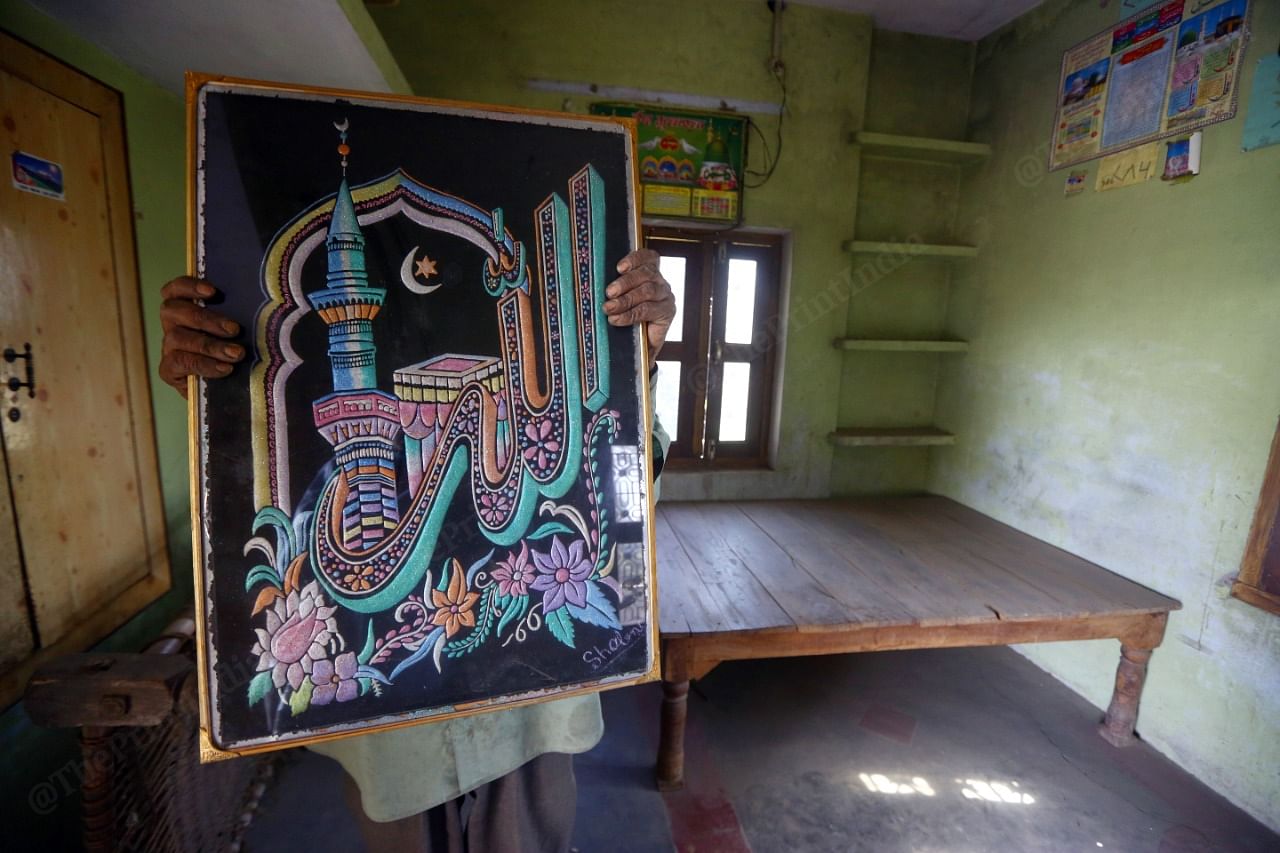
“Humari jaan ko khatra hai. Gaon wale bolte hai ki humein faayda ho gaya hai aur woh sarkar ko bech denge yeh (We fear for our lives. Villagers say we have benefitted from this incident and they will give away our land to the government),” said Fatima.
On several occasions, Sattar added, distant relatives have come to the property, thrown stones at them, and tried to barge in.
The land on which the house stands — measuring 9 acres or roughly 16 bighas — is owned in equal parts by Shaukat and Sattar. Located next to the main road, the property is prime real estate.
Sattar Ali’s son-in-law Dost Mohammad estimated that, at current market prices, one bigha can be sold for at least Rs 35 to 40 lakh. While Sattar is entitled to his 8 bighas, it is Shaukat’s share — worth approximately Rs 3 crore, including the house — whose ownership remains contested.
In the normal course of things, with her parents and brothers dead, Shabnam would have inherited Shaukat Ali’s property.
However, Section 114 (c) of the Uttar Pradesh Revenue Code 2006 states that a person who murders a landowner or abets the commission of such a murder, will be disqualified from inheriting the interest of the deceased. Section 114 (d) mandates that if a person is disqualified from inheriting the interest under clause (c), this interest will “devolve as if the disqualified person had died before the death” of the landowner.
Owing to the law, Shabnam’s advocate Arshad Ansari said, she can’t stake a claim to the property.
The UP Revenue Board, he added, still lists the property under Shaukat Ali’s name, but this can be changed whenever Sattar Ali files a prarthna patra (application).
“They (Sattar) are also waiting for Shabnam to be hanged. But she hasn’t completely exhausted all her legal remedies,” Ansari said. There have been several cases, he added, where women convicts sentenced to death were given life imprisonment.
Supreme Court advocate Anas Tanvir said Shaukat Ali’s property will be inherited by “first degree of relative”, which is Sattar Ali in this case. “There may also be some partial distribution among distant relatives,” added Tanvir, who is also the founder of the Indian Civil Liberties Union (ICLU), a collective of lawyers, activists, paralegals and students that was formed to provide free legal aid to citizens likely to be impacted by the National Register of Citizens (NRC) and the Citizenship Amendment Act (CAA).
Muslim family law won’t allow Taj to stake claim since Shabnam isn’t legally married to Salim, he said.
Also Read: NCRB data shows UP has the most crime cases in India, Delhi follows at rank 5
Taj Mohammad
Shabnam was six weeks pregnant when she was jailed. She gave birth to Taj in 2009, and he lived with her until he was six years old. He was then adopted by Usman Saifi, who is now a journalist.
Saifi said he first met Shabnam on a bus on their way to college. She was very helpful and urged him to pursue his studies, he added.
“I had completely lost all interest in my education. But Shabnam insisted that I keep pursuing it and paid my college fees as well,” Saifi said.
Since then, Saifi has finished his BA, done a course in mass communication, BEd, Law, and is now pursuing an MA. When Saifi heard about Taj, he said he was eager to adopt the child. However, his first meeting with Shabnam in jail didn’t go well. “I made a mistake during the first meeting, I asked why she had murdered her family, which upset her,” Saifi said.
Having known Shabnam in what now seems like a different time, Saifi said he couldn’t say for a fact if she had or hadn’t murdered her family. “I have been visiting her in jail for at least five years now, she has never said that she misses her mother or father,” he added.
Saifi became Taj’s adoptive father in July 2015. Taj lives with Saifi and his wife Vandana Singh, a primary school teacher, in Bulandshahr, a few hours from Bawankhedi.
Asked about their motivation to adopt him, Vandana said, “We didn’t see why a child had to suffer in jail because of his parents.”
Saifi claimed several people had accused him of adopting Taj only to get a share of the property. It’s a tag he wants to lose. “I would like Shabnam to give the property as daan,” he said. “It is needed for image correction and for Taj’s benefit. No good can come out of this.”
Saifi and Vandana describe Taj as a “frank” child who says everything on his mind. He told ThePrint that he aspires to be a district magistrate when he grows up because he wants to “help” people.
Asked if Taj missed his mother, Saifi pointed to a plate of biscuits kept on his table. “Here lie some namkeen biscuits. But if I were to place a breakfast spread in front of you, would you ever look at the biscuits?”
The question answered itself. Taj visits his mother in jail every three months.
Also Read: Before Hathras and Balrampur, UP reported at least 6 rape-murders in August


